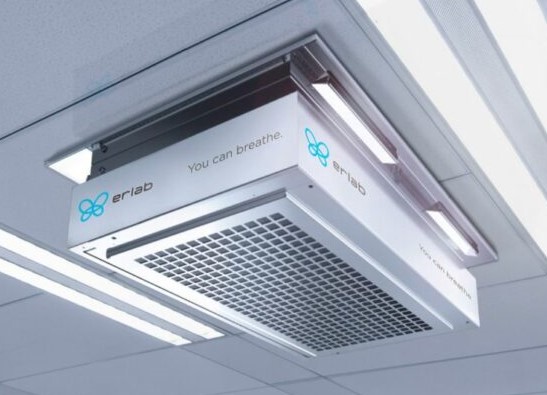
Beyond the Fume Hood: Air Filtration for the Whole Lab
Fume hoods are a lab essential that spans nearly all types of laboratory work and often represent one of the more expensive installations and upgrades to a lab space. From VOCs to viruses, fume hoods are there to remove fumes, vapors, and particles from the laboratory, protecting lab workers from potentially hazardous inhalations.
Traditional fume hoods must be connected to the lab building’s HVAC system, putting strain on the system and potential additional costs for maintenance. Ductless fume hoods are an excellent option when venting through the existing HVAC system is challenging, saving you from having to pour money into new ductwork installation or upgrades. Since ductless systems do not need to be attached to venting ducts they are considerably more flexible than traditional ducted hoods, allowing for a wide range of sizes and portability. We explore a number of popular fume hood options in a previous article, New Biosafety Cabinets, Fume Hoods, and Enclosures to Tackle Today’s Challenges.
Ductless fume hoods work via filtration, pulling in the contaminated air from the lab processes being conducted within the hood and putting it through various filters before expelling cleaned air back into the lab. The filter system means that the fume hoods can be tailored to very specific applications, although general purpose ductless fume hoods also exist. In general, these filters are either carbon-based or high efficiency particulate air (HEPA) filters. The carbon-based filters can be impregnated with various neutralizing agents to make them hyper specific for different vapors, compounds, or even radioactive isotopes.

But what if you could take these filtration principles and apply them to the whole lab? Erlab has done just that with their Halo Air Purification Stations. These whole-laboratory air filtration devices use laminar controlled airflow dynamics to constantly pull contaminated air upwards out of critical breathing zones, maintaining high air quality throughout the space. The Halo's laboratory-grade molecular filtration system contains Neutrodine, a unique and powerful activated carbon mixture combined with a pre-filter that captures a large variety of airborne fumes and odors. With 3 square feet of filtration media, the Halo filter's high capacity has an efficiency of over 99% and results in an 80% load concentration reduction of target contaminants, be they viruses, bacteria, mould, or VOCs.
Available in either a carbon-based or HEPA-based model, the Halo is also a smart device, with an app that allows you to remotely monitor the air quality in your lab right from your cell phone. As standalone systems which are completely separate from the building’s ventilation system, much like ductless fume hoods, the Halo is simple to install in any laboratory.
Over the past few years, indoor air quality and the importance of both filtration and air flow have featured prominently in the public eye. The health and safety of lab workers should be paramount in all labs, and in all workplaces in general. Perhaps in the future all labs will be built with such filtration systems and fume hoods will only be needed for the most noxious of chemicals. In the meantime, however, there are a number of options available that are sure to work well for your lab.
View LabX listings for Ductless Fume Hoods and Fume Hoods.










